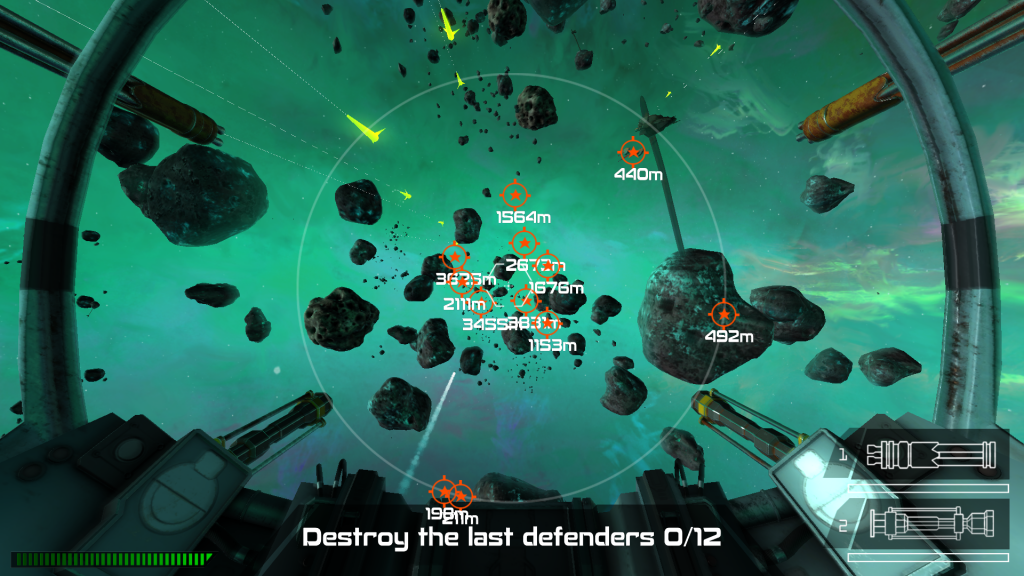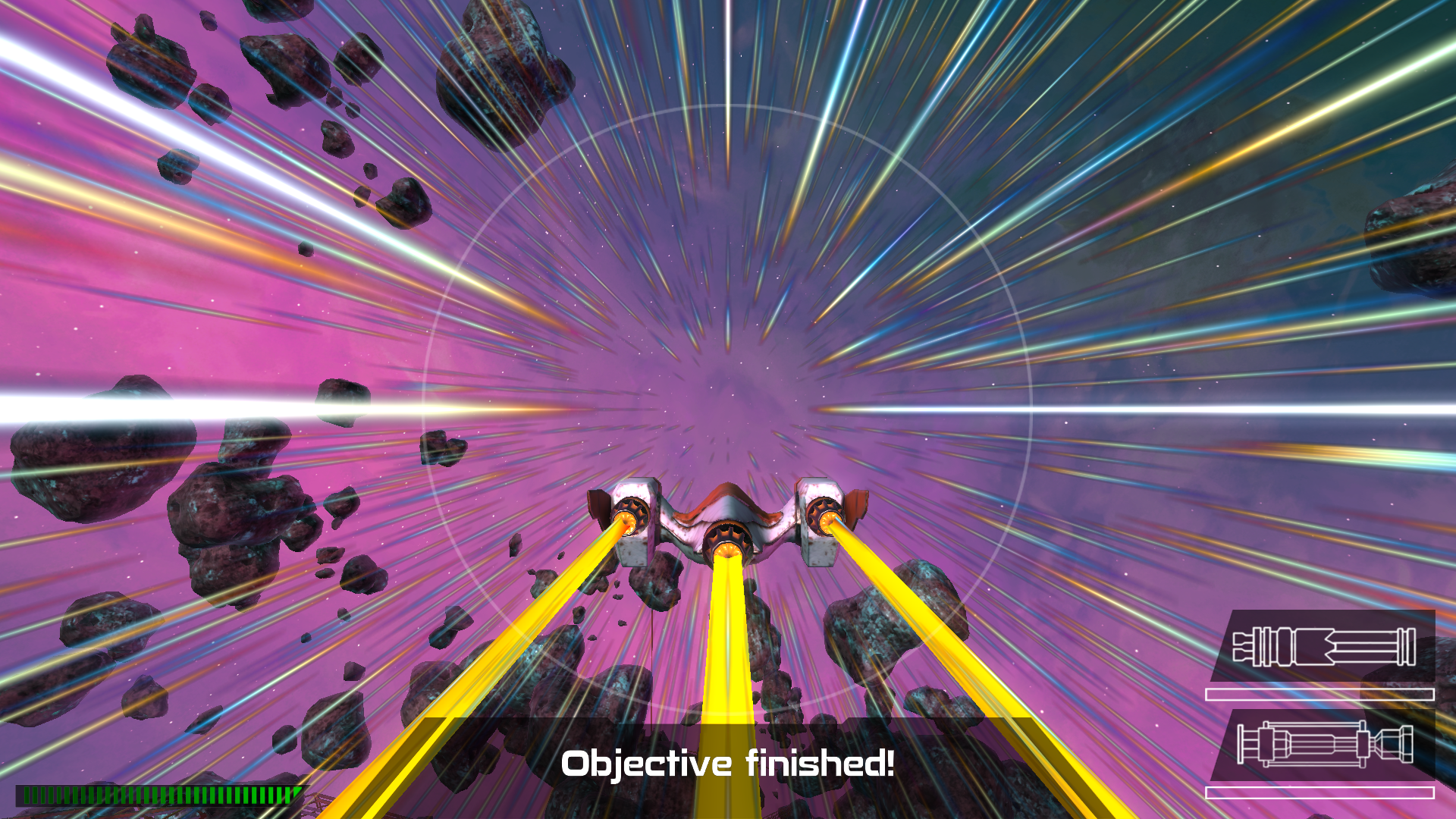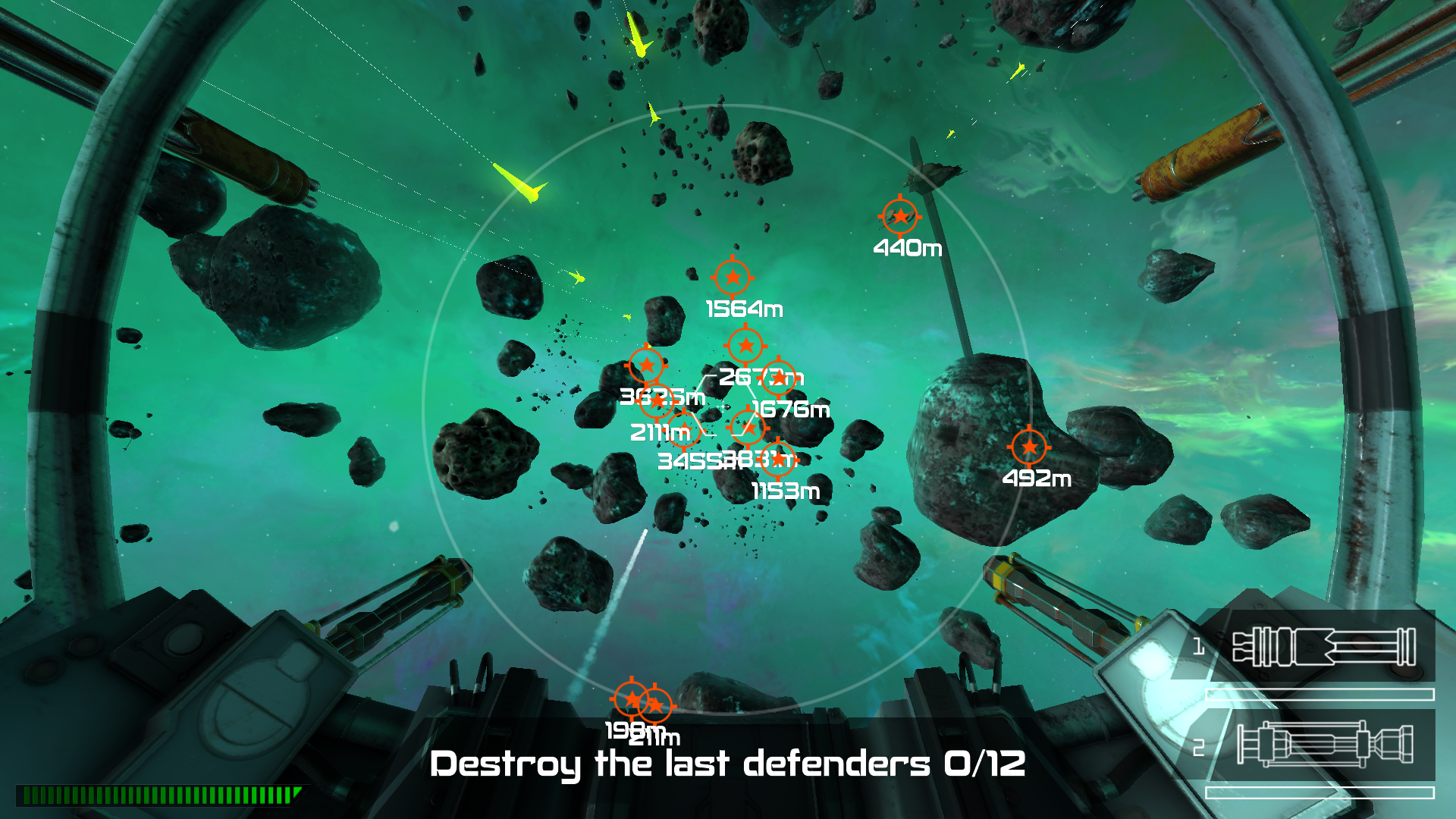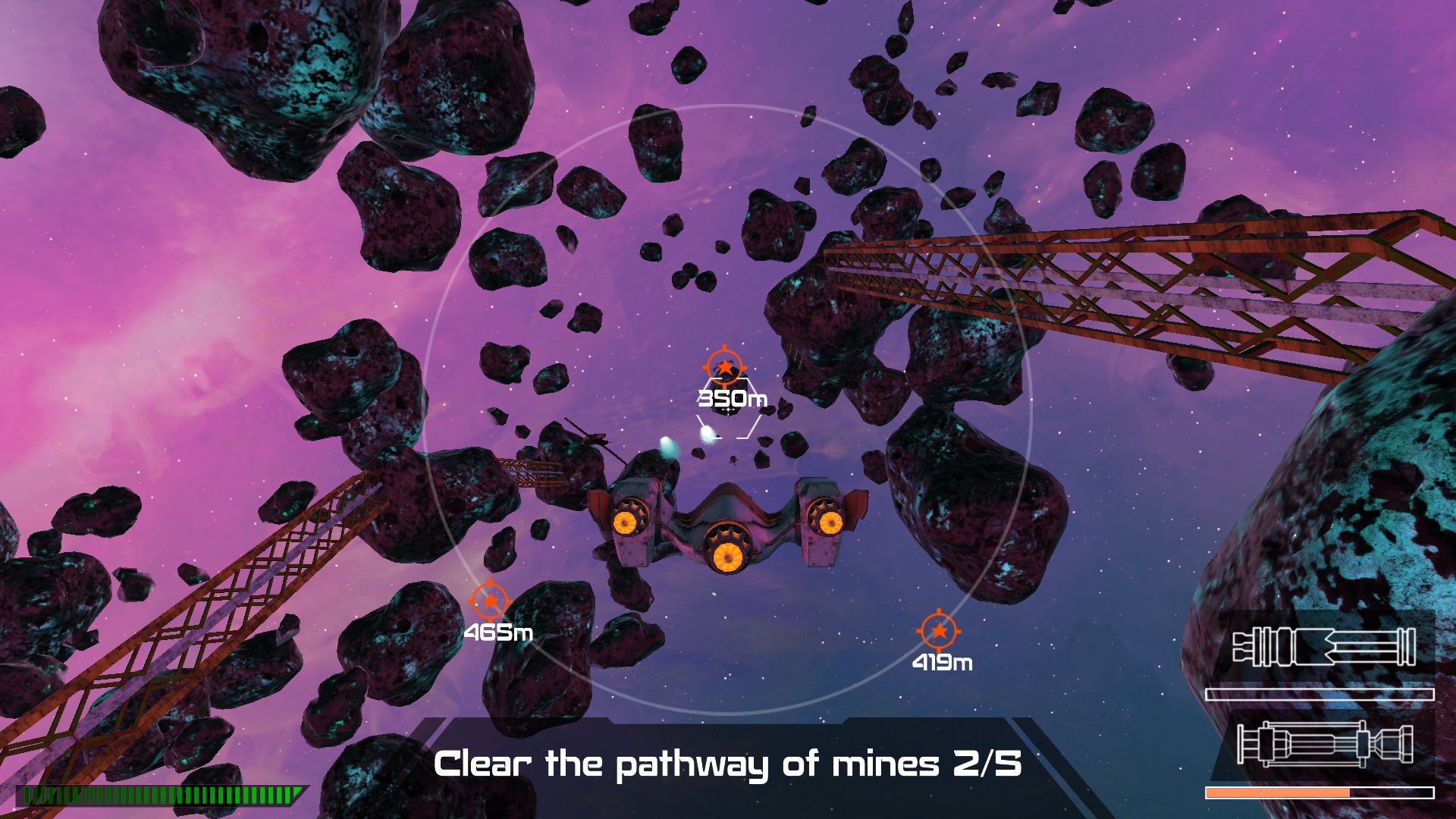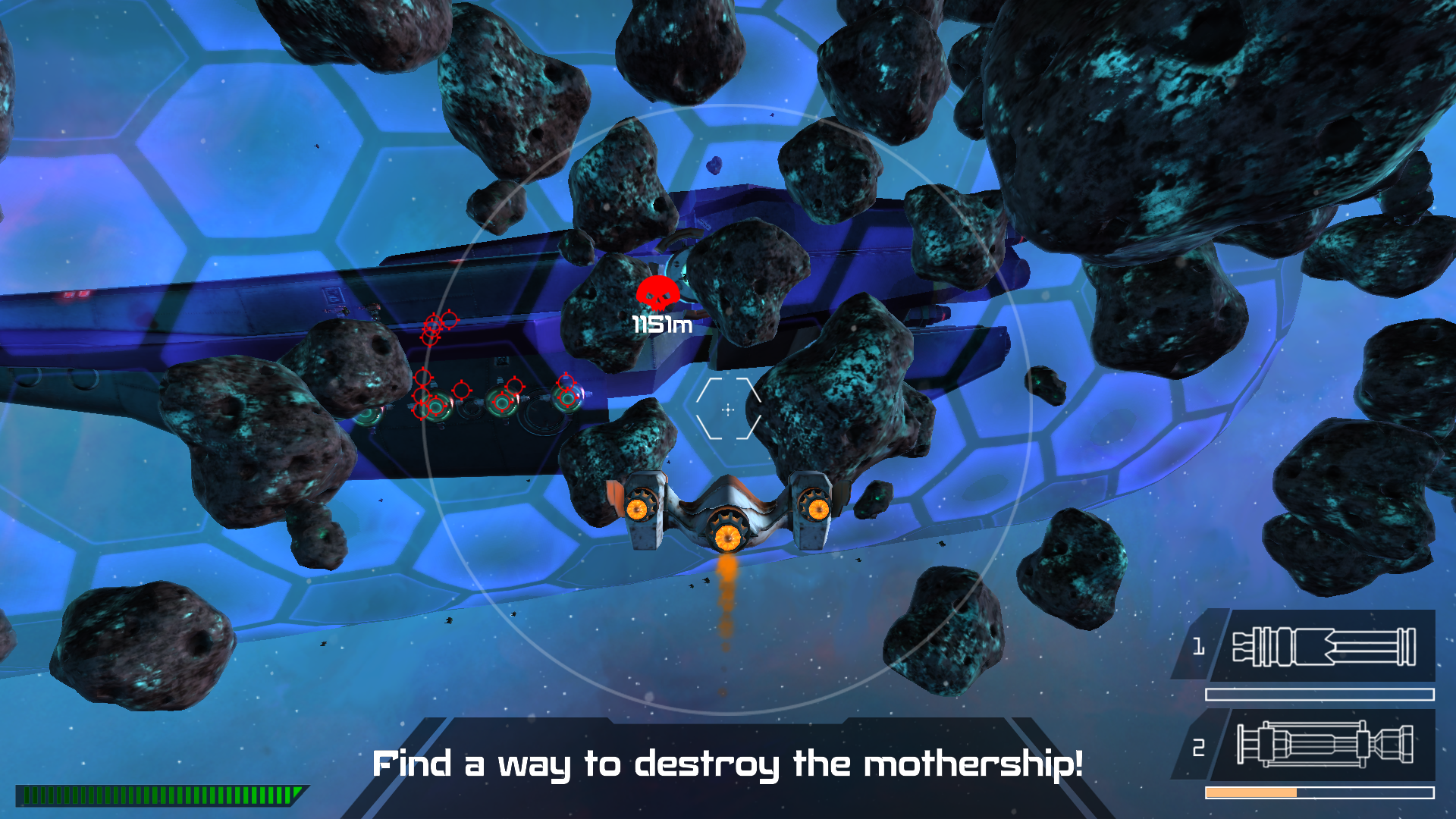Stellar Drift
Summary
Stellar Drift is a space shooter and the first game created during our second year at The Game Assembly. The gameplay consists of the player maneuvering around in space, taking down hostile ships and securing objectives in either a first-person or a third-person view.
Specifications
- Created in 10 weeks half-time
- Created with an in-house engine developed by our programmers
- Levels edited using Unity
- Scripted events with Lua
My contributions
- Level Design
- Game Design
- Scripting
- Designed and scripted levels 2 and 4
- Pre-production
- Prototyping
- Building and iterating based on feedback
- Implementing the level objectives and combat
- Set-dressing
The Sandcastle Team
Level Designers:
- William
- Julia Holmlund
Artists:
- Anniken Arfvidsson
- Christer Degerman
- Robin Tran
Programmers:
- Andreas Lasses
- Erik Paldanius
- Marcus Holst
- Robin Jacobsen
- Simon Skogsrydh
- Tobias Erlandsson
- Ylva Werner
Level Design for a Space Shooter
We decided early on as a team that we wanted there to be many different objectives in the game, like taking down hostiles or protecting a base. This is why our level progression is very objective-focused, which made the level design process a lot easier because of our clear objective marker system.
Still, designing levels for a space shooter was very difficult since the player can look in any direction at any given moment in time. Because of our objective system, the player getting lost was never an issue. The main difficulty was instead to make the entire space of the level interesting to fly around in, as well as making the level feel evenly propped and alive.
To solve this problem, we used moving asteroids. The asteroids would move around the level in different scripted clusters, creating movement and the feeling of action in the level. To contrast this our focal points were often static, which together with their distinct shape made them more visible to the player. The levels also improved a lot once we implemented props of different sizes and shapes that were interesting to maneuver around, such as pipes between the asteroids.
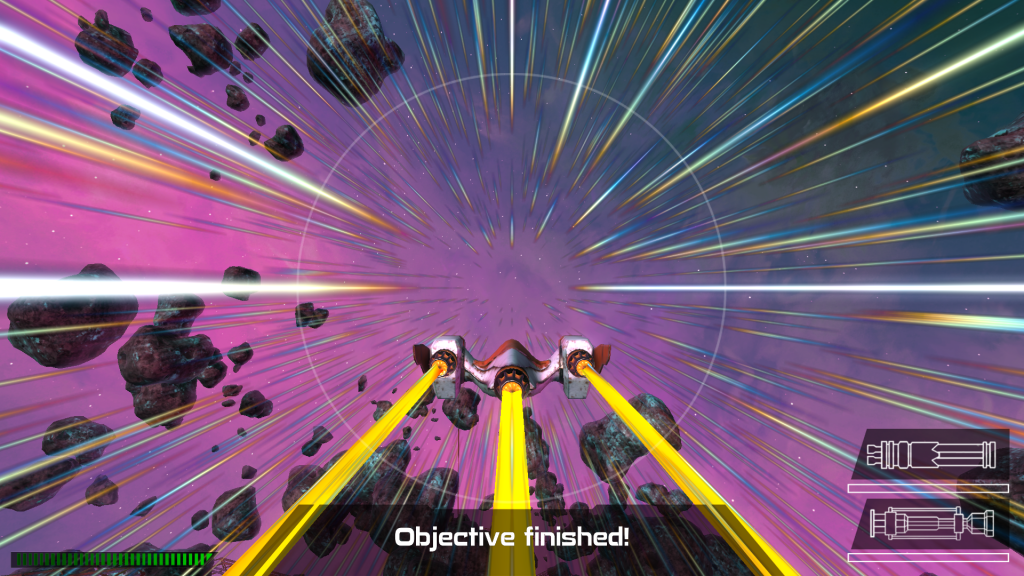
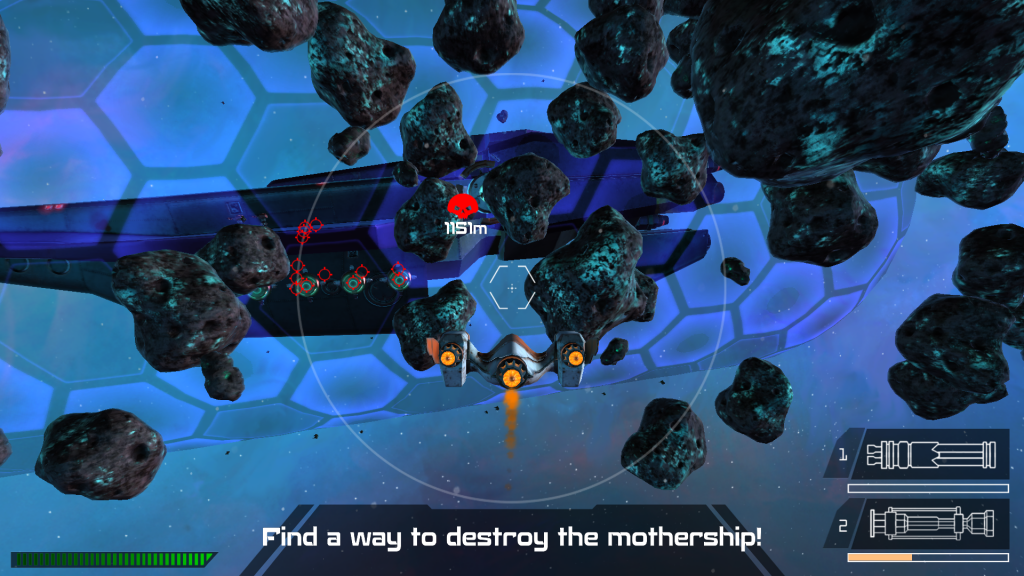
Enter the Mothership
Of course, we couldn't have a space shooter without an epic battle with a huge ship! Our ideas for implementing this ship were great. We had a modular design approach where we could reuse a bunch of different elements that we already had in our level. For instance, the mothership spawned swarmers, a type of enemy we already had. We could also attach pre-made turrets to our mothership and turn them into targets for the player.
However, we made one mistake which was that the ending for the two final levels were completely dependent on the mothership. This is why they couldn't be fully tested until the mothership was complete, and we couldn't test our game in its entirety as a result. We ended up handling this situation well, but we definitely learned some things from this experience. The most important of which was to always have our game be fully playable, being able to run from start to finish and clearing the game. This is a lesson that we applied in every project since!
Conclusion
This game was very fun to make and it was really rewarding to script objectives and events using Lua again! With this game we built a solid foundation for our next two games to be built upon. The engine and features we made in this game have since been iterated upon and been part of our following game projects.
